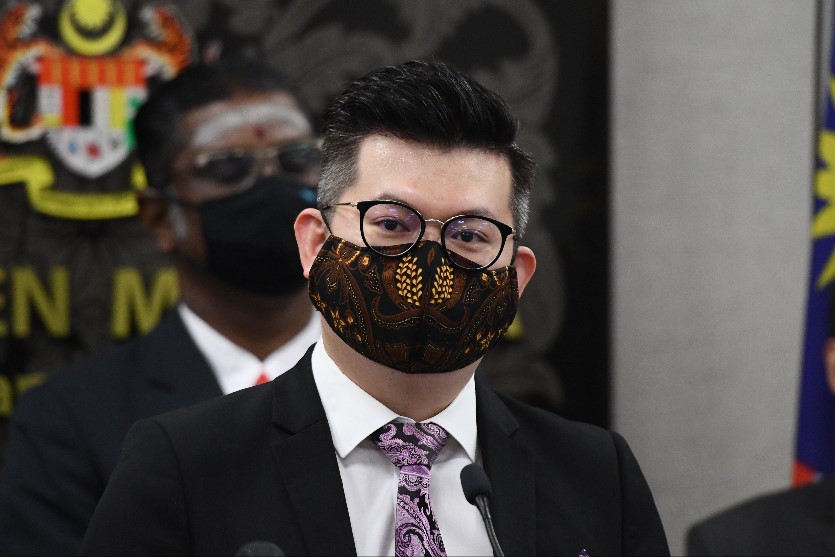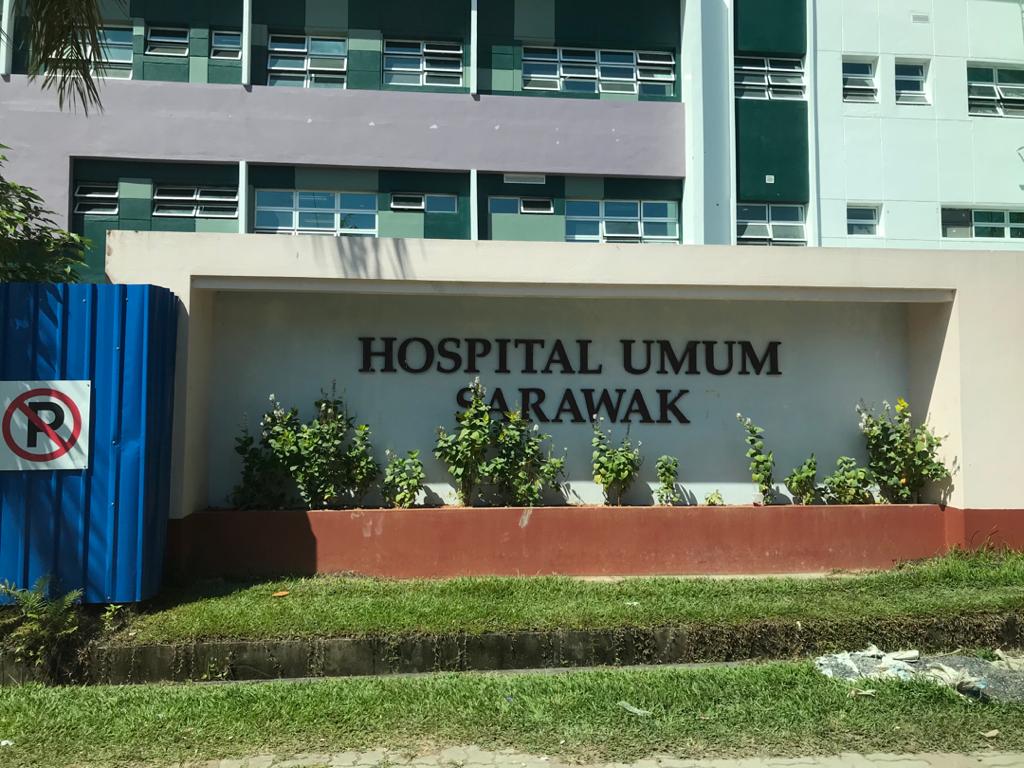KUALA LUMPUR, Sept 3 — Labuan and Sarawak have completely inoculated more than 60 per cent of their residents against Covid-19. But while the epidemic in the former is vastly abating, the latter is swelling across all indicators.
Experts point to factors like natural immunity in Labuan where double the number of residents per capita have been infected with Covid-19 than Sarawak, the different vaccines predominantly used (Pfizer-BioNTech in Labuan and Sinovac in Sarawak), and varying effectiveness of public health measures like testing and contact tracing between the two.
While Labuan has seen a steady decline in new Covid-19 infections in the past three months to levels observed in April prior to the small island’s Delta outbreak in June, vaccination coverage alone hasn’t stopped new infections from rising to record highs in Sarawak — the country’s fourth most populous state with a population of 2.8 million.
Sarawak reported a 225 per cent rise in daily Covid-19 cases from 703 cases on June 1 to 2,285 cases on August 31. In total, the state recorded 69,229 cases from June 1 to August 31, a 50 per cent increase from the 46,215 cases it reported from January to May this year.
Yesterday, the state reported a daily record high of 2,992 cases. Sarawak also recorded eight new Covid-19 deaths, the highest since June 11 with 12 fatalities. However, on a per capita basis, Sarawak’s Covid-19 fatalities over the past week were the third-lowest in the country at 11 deaths per million population, much lower than the national rate of 61.
In contrast, Labuan — with a population size of 99,600 — reported a 97 per cent decline in daily Covid-19 cases on rolling seven-day averages from 134.14 cases on June 1 to 3.57 cases on August 31.
The same conflicting pattern can be seen when comparing hospital admission rates, intensive care unit (ICU) cases, and deaths between the two highly vaccinated states in the three months from June 1 to August 31, according to Ministry of Health (MOH) data.
While Sarawak’s currently hospitalised Covid-19 cases on rolling seven-day averages nearly halved from 608.29 cases on June 11 to 320.86 on August 20, it has since risen 47 per cent to early-July levels with 470.29 cases on August 31.
The state’s Covid-19 hospital admissions also reported a similar swing, falling from a high 480.43 cases on June 8 to a low 201.29 cases on August 1, before spiking 92 per cent to 385.71 cases on August 31, back to where it stood two months ago due to a sharp increase in Delta variant cases.
To compare, Labuan’s currently hospitalised Covid-19 cases on rolling seven-day averages recorded a significant decline from 32.43 cases on June 1 to 5.14 on August 31, while its Covid-19 hospital admissions decreased from seven cases to 0.43 cases over the same period.
On ICU cases based on rolling averages, Sarawak’s three-fold decline from a high 105.29 cases on June 17 to 29 cases on August 4 also appears to be short-lived as critical Covid-19 patients requiring intensive care in the state jumped 133 per cent to 67.71 on August 31. Labuan went from about 24.57 ICU cases on July 8 to zero ICU cases on rolling average from August 18 to date.
As of September 1, the Covid-19 hospital bed occupancy rate in Sarawak has reached 72 per cent, while its Covid-19 ICU capacity is at about 58 per cent, including patients-under-investigation. CodeBlue understands that Sarawak General Hospital (SGH) — the state’s main tertiary hospital — now limits admissions to Covid-19 cases in Categories 2B and above, after initially admitting everyone who tested positive for the virus. Category 2B and 2A are symptomatic with and without warning signs respectively.
Sarawak’s Covid-19 deaths based on rolling averages saw a significant decline from 5.43 fatalities on June 1 to as low as 0.71 deaths in early August, before rising 342 per cent to 3.14 cases on August 31. Labuan has reported zero deaths on average since August 10.
Infectious disease expert Prof Dr Adeeba Kamarulzaman, in her previous comments to CodeBlue on the decline in hospitalisation, ICU cases, and infections in the Klang Valley, observed that Covid-19 infections may begin to plateau 14 days after full inoculation of 60 per cent of the total population. Labuan hit 60 per cent full vaccination of its total population on August 12, while Sarawak hit the same milestone a week later on August 19.
Natural Immunity From Infection And Vaccine Type

Consultant paediatrician Dr Amar-Singh HSS suggested two reasons for the discrepancies seen in Labuan and Sarawak — namely, natural immunity levels in the community and the principal Covid-19 vaccine brand used by the two states.
He noted that as of August 30, Labuan’s 9,808 total reported coronavirus cases against its small population size equated to an overall infection rate of 9,847 per 100,000, twice Sarawak’s infection rate of 4,057 per 100,000 based on the state’s total 114,273 reported cases.
“Hence, natural immunity is much higher and vaccination would have boosted this further. This would mean better community protection in Labuan than Sarawak,” he told CodeBlue when contacted recently.
Dr Amar-Singh also highlighted Labuan’s predominant use of the Pfizer mRNA vaccine versus Sarawak’s 78 per cent use of the Sinovac shot.
As of August 31, Labuan has administered a total 134,328 Covid-19 vaccine doses, of which 88.89 per cent or 119,310 are Pfizer, while 8.87 per cent or 11,917 doses are Sinovac.
Sarawak has administered a total 3,630,858 Covid-19 vaccine doses, comprising 77.8 per cent or 2,824,894 Sinovac doses, 682,631 Pfizer doses (18.8 per cent), and 88,43 AstraZeneca doses (2.4 per cent)
A recently published study in Thailand on the effectiveness of Sinovac against Delta showed that the vaccine’s level of protection against the aggressive strain dropped to 48.33 per cent six months after the second dose. To compare, the study noted that the efficacy of the Sinovac vaccine against the original coronavirus strain is 98.33 per cent, 75 per cent for the Alpha variant, and 70 per cent for the Beta variant.
Delta is currently the dominant variant spreading nationally and in Sarawak. MOH reported that out of 1,201 coronavirus variant of concern (VOC) cases identified as of August 29, a total 978 cases are of the Delta variant, Beta (209), and Alpha (14).
Of the 978 Delta variant cases identified, 71 per cent or 695 cases were found in Sarawak, while most states reported double-digit cases, including Labuan with 10 cases.
Sarawak Record High 18% Positive Rate
Dr Amar-Singh further noted that Sarawak’s test positivity is very high, which indicates many more undetected cases.
According to MOH testing data from August 11 until August 29, Sarawak’s positive rate nearly tripled from 4.35 per cent to a record 18.32 per cent. In other words, Sarawak likely has far more Covid-19 infections than the 29,492 cases officially reported over the period.
The World Health Organization (WHO) recommends a benchmark 5 per cent positive rate as an indicator of sufficient testing, while MOH believes that a maximum 10 per cent rate is adequate.
MOH data revealed that only Labuan is testing adequately to detect Covid-19. Labuan reported an average positive rate of 1.01 per cent for the week of August 15 to 21, and an average 1.03 per cent for the August 22-28 week. Its positive rate on August 29 stood at 0.58 per cent based on two positive cases detected among 343 tests done.
Sarawak’s surge in Covid-19 cases has seen the state reporting four-digit cases consecutively since August 18, averaging at about 1,912 cases daily. According to Sarawak’s state health department, the surge is mainly contributed by cases in the state capital Kuching, as well as districts like Samarahan, Serian, Sibu, and Kapit.
State data as of August 21 showed that Kuching had the seventh-highest vaccination coverage by district, with 82.7 per cent of its 582,300 eligible population fully vaccinated. Samarahan, Serian, and Bintulu form the top three districts with the highest vaccination rates in Sarawak.
Different Public Health Interventions

Bandar Kuching MP Dr Kelvin Yii told CodeBlue that while the common theory on the contrasting epidemic outcomes between Labuan and Sarawak may be due to type of vaccines used in both regions, he said it was premature to draw such conclusions without proper data on all the breakthrough cases in Sarawak, including types of vaccine taken by each patient and time of infection, whether before or after two weeks upon receiving the second dose.
Dr Yii said the main difference could be due to the different public health interventions deployed in both regions, which include adequate testing and quick isolation as reflected in their positive rates.
“If we look at the average positive rate in Labuan from August 11 to August 27, 2021, which is 0.97 per cent in comparison to about 10.31 per cent in Sarawak for the same period, it clearly shows that the fundamental public health measure to test adequately is better managed in Labuan as it is significantly below the WHO recommendation of five per cent.
“If there is adequate testing, we then can get ahead of the virus, isolate quickly and thus break the chain of transmission. In the case of Sarawak, this could be the case of prolonged under-testing, causing the government to completely lose track of the virus’ spreading pattern.
“With severely insufficient testing and primitive method in tracing, it is impossible to isolate the positive cases effectively to prevent further spreading in the community,” Dr Yii said.
The DAP lawmaker added that while the rise of cases in many parts of Sarawak is a cause for concern, increasing infections in the central region of Sarawak, especially Sibu, may give rise to the possibility of Delta spreading further to rural areas. Sibu reported 665 coronavirus cases in the 34th epidemiological week (August 22-28), a 211 per cent spike from 214 cases the previous week.
Sibu primarily acts as a gateway to rural areas in central and northern Sarawak. “This is a cause of concern due to the lack of health care facilities in rural areas and an outbreak in such areas will be devastating,” Dr Yii said.
Rising Covid-19 ICU Cases In SGH

A medical doctor at Sibu Hospital, who spoke to CodeBlue on condition of anonymity, said while the situation remains manageable, there has been an uptick in Covid-19 patients within the past week although not as severe as Kuching, where additional manpower have been recruited.
A doctor at SGH, who also spoke to CodeBlue on condition of anonymity, said the hospital is facing an increase in Covid-19 patients, with the number of ICU cases going up since the Delta wave hit Kuching.
“But overall, the severity has been blunted by the aggressive vaccination programme. I don’t think (and really hope) that we will see the likes of the Klang Valley healthcare system collapse. Nevertheless, the number of patients on oxygen remains high,” the SGH doctor said.
The SGH doctor believes that the numbers will get higher, but he expects the government’s “living with Covid-19” endemic approach will help to reduce the burden on the health care system once those policies come into effect.
While staff at SGH are still coping amid the surge in Covid-19 patients, overall operations are noticeably slower with lab turnaround time for coronavirus PCR tests currently stretching up to five days due to the immense workload.
“I don’t know what is manageable and what is not anymore. Working in SGH has severely warped my perception of what is ‘normal’. I’m just amazed by our collective tenacity, and that things are still moving.”








